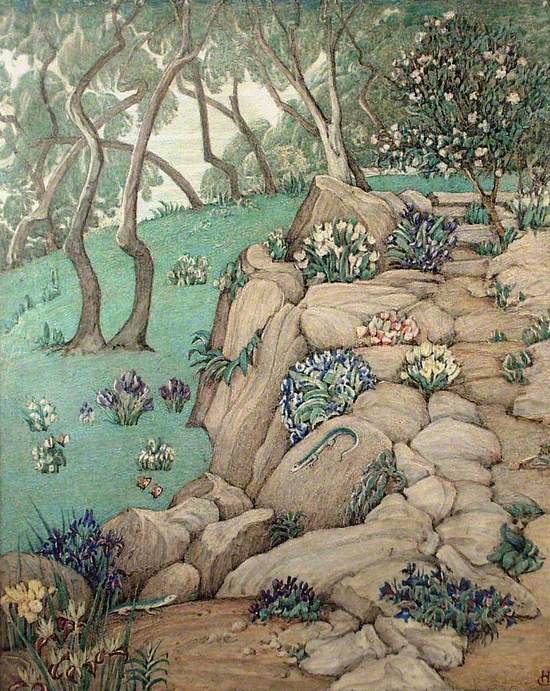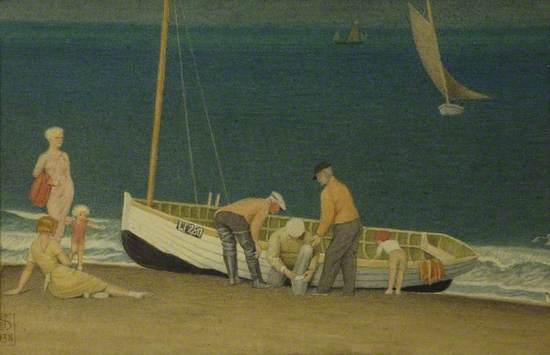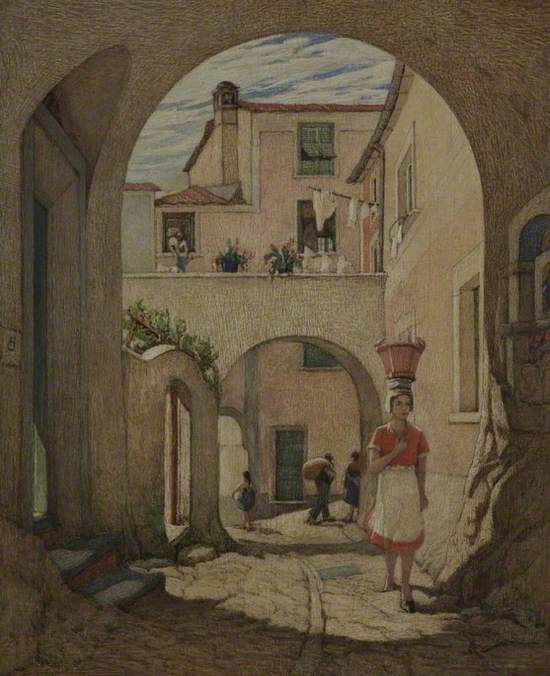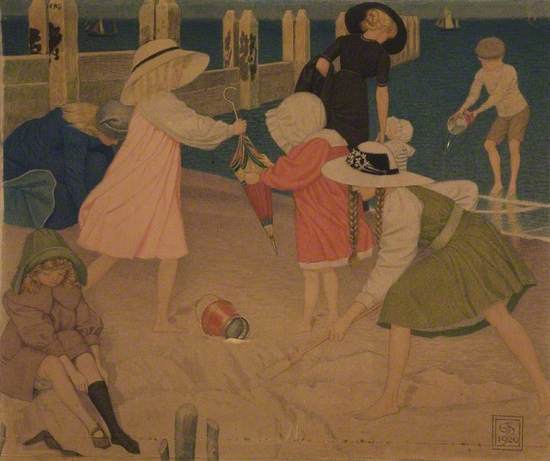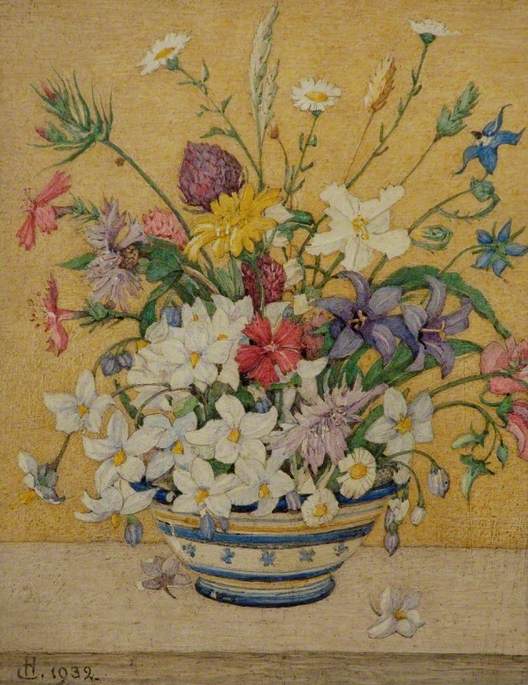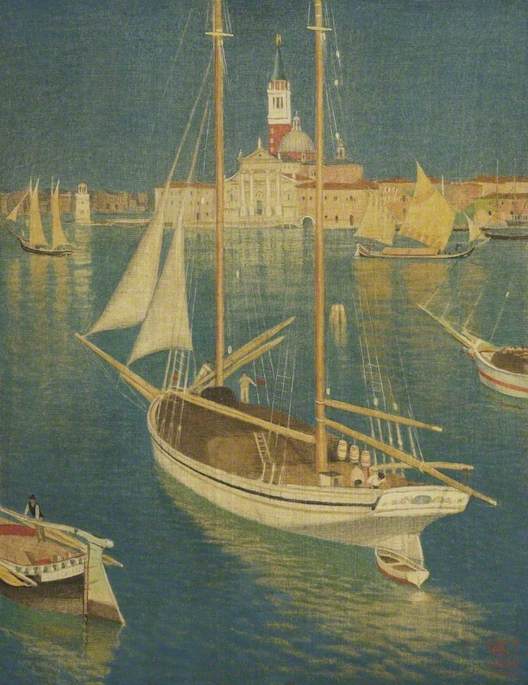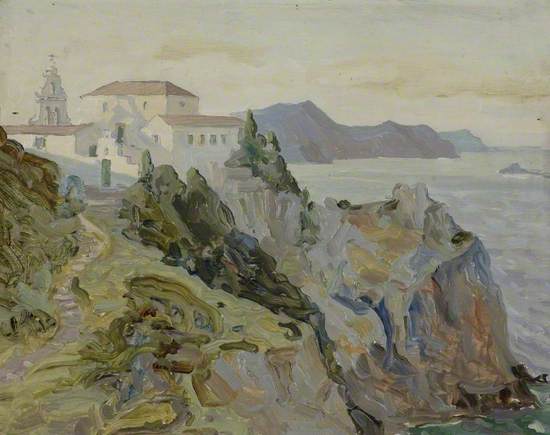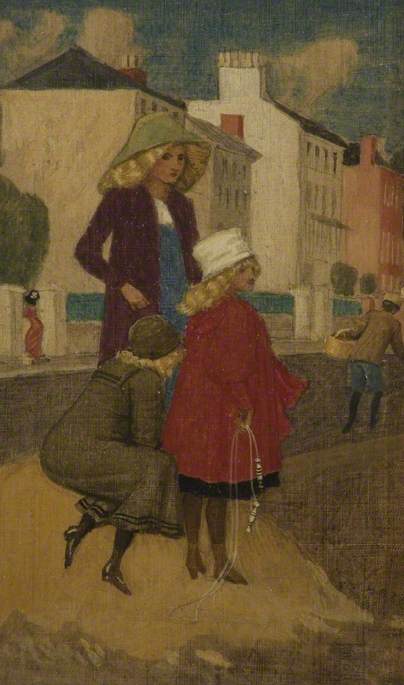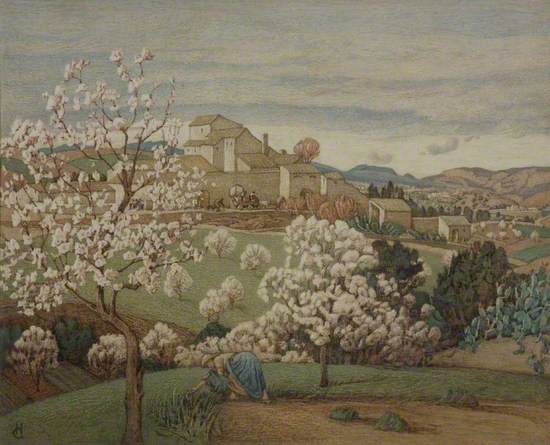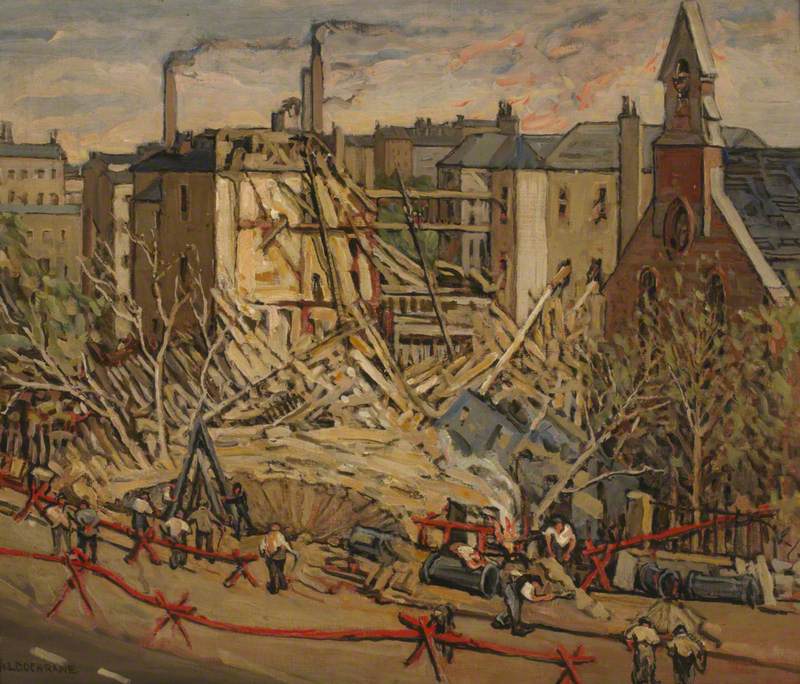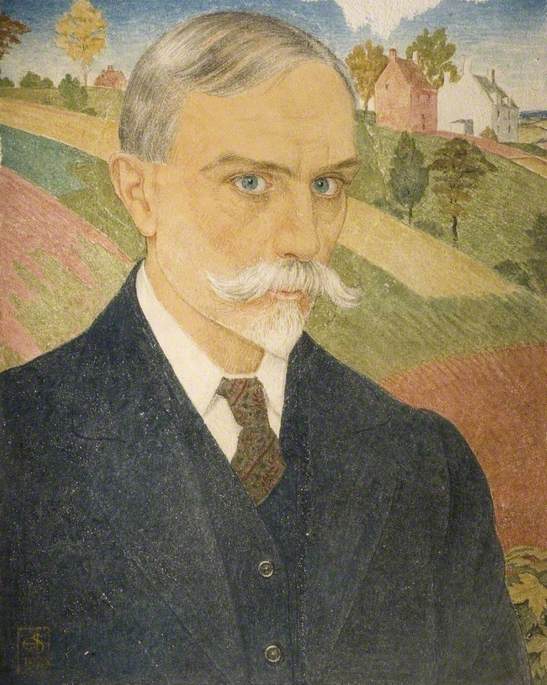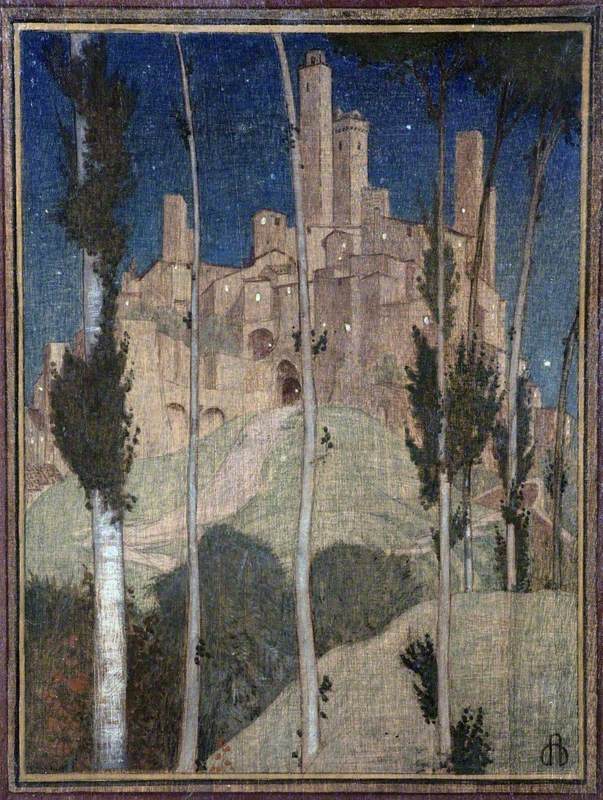Before the 1500s, tempera, a mixture of pigment and egg, was the favoured method of most artists. Following the discovery of oil paint, tempera fell from favour. Occasionally used by artists such as William Blake, it was rarely seen until the tempera revival at the very beginning of the 20th century.
Tempera painting is laborious and requires great skill. Oil paint is a forgiving, adaptable medium which can be painted over and reworked. Tempera, by contrast, cannot be altered once the paint has been laid down. It is a more demanding medium, which almost certainly explains why artists abandoned it.
Katharine Wall, Collections Manager, Victoria Art Gallery
Helen Lavinia Cochrane (1868–1946)
Tempera on board
H 41.8 x W 32.8 cm
Victoria Art Gallery
Joseph Edward Southall (1861–1944)
Tempera on board
H 19 x W 30.4 cm
Victoria Art Gallery
Helen Lavinia Cochrane (1868–1946)
Tempera on board
H 39.5 x W 32.5 cm
Victoria Art Gallery
This beautiful painting is a study for a mural that was never executed. Although only a study it is detailed and highly finished. It probably shows Southwold, where Southall and his wife honeymooned in 1903. They returned there for an annual summer holiday right up to the mid-1930s.
Joseph Edward Southall (1861–1944)
Tempera on board
H 33 x W 39 cm
Victoria Art Gallery
Tempera paint has a tendency to be thick and gelatinous. Because of its texture tempera can only be applied with the smallest of brushes. This makes it ideally suited to subjects such as this, that are full of meticulous details.
Helen Lavinia Cochrane (1868–1946)
Tempera on board
H 19.4 x W 15.7 cm
Victoria Art Gallery
Helen Lavinia Cochrane (1868–1946)
Tempera on board
H 55.9 x W 40.6 cm
Victoria Art Gallery
Southall first discovered tempera in the 1880s. He toured Italy, where wonderful medieval religious works painted in the medium could be found. There was no tradition of tempera painting in England, so the artist's visit to Italy was a revelation.
Southall loved Italy and continued to visit the country throughout his life.
Joseph Edward Southall (1861–1944)
Tempera on board
H 34 x W 26.8 cm
Victoria Art Gallery
.

John Armstrong (1893–1973)
Tempera on board
H 64 x W 36 cm
Victoria Art Gallery
Helen Lavinia Cochrane (1868–1946)
Tempera on board
H 25 x W 18.4 cm
Victoria Art Gallery
Joseph Edward Southall (1861–1944)
Tempera on board
H 30.8 x W 24.3 cm
Victoria Art Gallery
Helen Lavinia Cochrane (1868–1946)
Tempera on board
H 23.9 x W 32 cm
Victoria Art Gallery
Joseph Edward Southall (1861–1944)
Tempera on board
H 17 x W 11 cm
Victoria Art Gallery
Helen Lavinia Cochrane (1868–1946)
Tempera on board
H 32.6 x W 40.3 cm
Victoria Art Gallery
.

San Gimignano, Italy
Maxwell Ashby Armfield (1881–1972)
Oil on panel
H 28.3 x W 23.2 cm
Victoria Art Gallery
